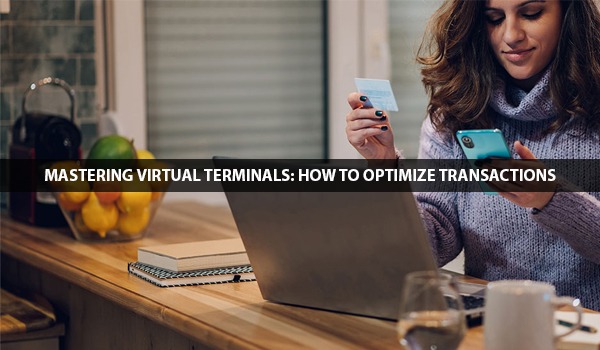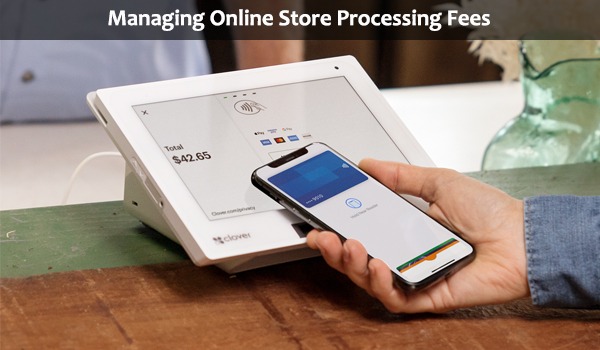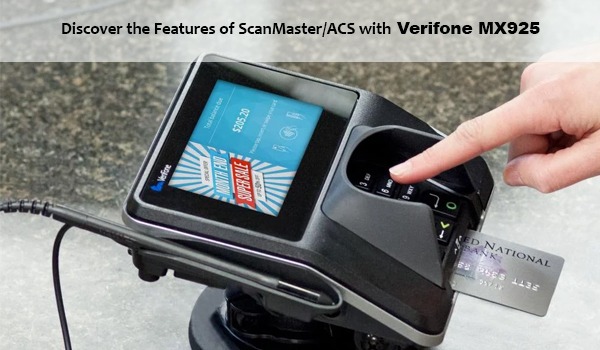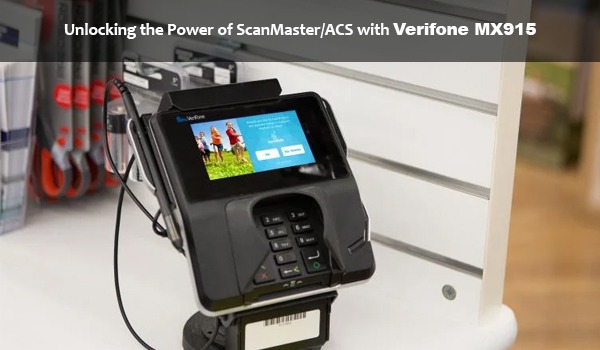
Introduction
Processing fees are a crucial aspect of running an online store, impacting your bottom line and overall profitability. In this article, we'll delve into the intricacies of online store processing fees, offering comparisons and key considerations to help you make informed decisions for your e-commerce business.
Payment Processor Options
When comparing payment processors, consider not only their fee structures but also their additional features and integrations. For example, some processors offer built-in invoicing tools, subscription management, or integrations with popular e-commerce platforms like Shopify or WooCommerce. These features can streamline your business operations and potentially offset higher processing fees with added functionality.
Furthermore, assesses the reliability and uptime of each payment processor. Downtime or technical issues can result in lost sales and damage your reputation with customers. Look for processors with a track record of high availability and robust infrastructure to minimize disruptions to your online store.
Lastly, consider the scalability of each payment processor. As your business grows, you may need additional features or support for higher transaction volumes. Choosing a processor that can scale with your business ensures you won't outgrow your payment solution and need to switch providers down the line, which can be disruptive and time-consuming.
Fee Structures
In addition to transaction fees and fixed fees, be aware of any hidden or incidental charges that could impact your overall processing costs. It's also essential to consider the impact of different fee structures on your profit margins. While a processor with lower transaction fees may seem appealing, they may offset these savings with higher fixed fees or monthly subscription costs. Analyze your average order value and transaction volume to determine which fee structure offers the best value for your business.
Lastly, keep an eye out for promotional offers or special rates that payment processors may offer to new customers. While these introductory rates can provide short-term savings, be sure to evaluate the long-term costs once the promotional period ends to avoid any unwelcome surprises.
Volume Discounts
When negotiating volume-based discounts with payment processors, consider factors beyond just transaction volume. For example, some processors may offer lower rates for businesses in specific industries or with unique processing needs. Highlighting your business's unique characteristics and negotiating custom rates based on your requirements can lead to significant savings over time.
Additionally, explore opportunities for optimizing your sales volume to qualify for lower rates. Implementing strategies to increase average order value or encourage repeat purchases can help you reach volume thresholds more quickly and unlock discounted processing rates. Collaborating closely with your payment processor and regularly reviewing your sales data can identify opportunities for further optimization.
Finally, be mindful of any minimum processing requirements associated with volume discounts. Failing to meet these minimums could result in losing access to discounted rates or facing additional fees. Monitor your transaction volume closely and adjust your strategy as needed to ensure continued eligibility for volume-based discounts.
Payment Methods
Diversifying your accepted payment methods can enhance the customer experience and drive sales while also optimizing processing costs. For example, offering digital wallets like Apple Pay or Google Pay can appeal to mobile users and streamline the checkout process, potentially reducing cart abandonment rates.
Consider the demographics and preferences of your target audience when selecting payment methods to support. For instance, younger consumers may be more likely to use alternative payment methods like cryptocurrencies, while older demographics may prefer traditional credit or debit cards. By catering to a diverse range of payment preferences, you can capture a larger share of the market and increase customer satisfaction.
Additionally, explore opportunities to leverage payment methods that offer lower processing fees. For example, ACH transfers typically incur lower fees compared to credit card transactions, making them an attractive option for larger purchases or recurring billing arrangements. By strategically promoting and incentivizing the use of lower-cost payment methods, you can reduce your overall processing expenses and improve profitability.
Chargeback Fees
Mitigating chargebacks requires proactive monitoring and dispute-resolution strategies. Implementing fraud detection tools and verification processes can help identify suspicious transactions before they result in chargebacks, reducing your exposure to potential losses and associated fees.
Furthermore, prioritize communication and transparency with customers to prevent misunderstandings and disputes. Providing clear product descriptions, shipping information, and return policies can minimize the likelihood of chargebacks resulting from buyer confusion or dissatisfaction. Promptly addressing customer inquiries and concerns can also prevent escalations to chargeback disputes and preserve customer goodwill.
In cases where chargebacks are unavoidable, having a streamlined dispute resolution process in place can help you resolve disputes efficiently and minimize associated fees. Familiarize yourself with the chargeback process and requirements set forth by card networks and payment processors to ensure compliance and maximize your chances of a successful outcome.
Additionally, consider investing in chargeback management services or software that can automate dispute handling and provide insights into chargeback trends and root causes. By proactively addressing chargeback issues and implementing preventive measures, you can reduce your exposure to chargeback fees and protect your business's financial health.
Payout Schedule
A shorter payout schedule can provide numerous benefits for your business, including improved cash flow management, faster access to funds, and enhanced operational flexibility. Evaluate each processor's payout schedule and consider the impact on your business's financial operations and liquidity.
In addition to the payout frequency, pay attention to any processing delays or holds that may affect when funds are available for withdrawal. Some processors may impose holds on funds for new accounts or high-risk transactions to mitigate fraud and chargeback risks. Understanding these policies and their implications for your business can help you plan accordingly and avoid cash flow disruptions.
Furthermore, consider the impact of payout schedules on your ability to fulfill orders and manage inventory levels. A shorter payout schedule can enable you to reinvest revenue more quickly into restocking inventory, launching new products, or investing in marketing initiatives to drive growth. By optimizing your payout schedule to align with your business's cash flow needs and operational requirements, you can maximize efficiency and capitalize on growth opportunities.
Lastly, evaluate the convenience and flexibility of each processor's payout options. Some processors may offer multiple payout methods, such as bank transfers, debit cards, or digital wallets, allowing you to choose the option that best suits your preferences and needs. Additionally, consider any associated fees or processing times for each payout method to ensure you select the most cost-effective and efficient option for your business.
Security and Compliance
Ensuring the security and compliance of your payment processing solution is essential for protecting sensitive customer data and maintaining trust with your audience. Look for payment processors that adhere to industry-leading security standards, such as PCI DSS (Payment Card Industry Data Security Standard), to safeguard cardholder information and prevent data breaches.
In addition to PCI compliance, consider the availability of advanced security features and fraud prevention tools offered by each processor. Features like tokenization, encryption, and 3D Secure authentication can add an extra layer of protection against unauthorized access and fraudulent transactions. Evaluate the effectiveness and ease of implementation of these security measures to ensure comprehensive protection for your online store.
Furthermore, prioritize processors that offer robust compliance support and resources to help you navigate regulatory requirements and industry standards. Stay informed about updates and changes to compliance regulations, such as GDPR (General Data Protection Regulation) or PSD2 (Payment Services Directive 2), and work closely with your processor to ensure ongoing compliance and risk mitigation.
Lastly, consider the reputation and track record of each payment processor in terms of security incidents and data breaches. Conduct thorough research and review independent assessments and audits to gauge the reliability and trustworthiness of each provider. Prioritizing security and compliance in your payment processing strategy demonstrates your commitment to protecting customer data and preserving the integrity of your online store.
Integration and Compatibility
Seamless integration with your existing e-commerce platform or website builder is essential for maximizing efficiency and minimizing disruptions to your business operations. Evaluate the compatibility and ease of integration of each payment processor with your chosen platform, considering factors such as supported platforms, programming languages, and development resources.
Choose a payment processor that offers comprehensive integration options and developer tools to streamline the implementation process and minimize the need for custom development work. Look for plugins, APIs, and SDKs that simplify integration and provide access to essential features and functionalities, such as payment processing, order management, and reporting.
Additionally, consider the scalability and flexibility of each integration solution, particularly if you anticipate future growth or changes to your business requirements. Ensure that the integration can accommodate increased transaction volumes, additional payment methods, and evolving industry standards without requiring significant reconfiguration or redevelopment.
Lastly, assess the availability of technical support and resources provided by each payment processor to assist with integration and troubleshooting. Responsive support and comprehensive documentation can help you overcome challenges quickly and ensure a smooth transition to your new payment processing solution. By prioritizing integration and compatibility in your selection criteria, you can minimize implementation risks and optimize the performance of your online store.
Customer Support
Responsive and reliable customer support is essential for resolving issues quickly and maintaining smooth operations for your online store. Evaluate the quality and availability of support offered by each payment processor, considering factors such as response times, communication channels, and expertise.
Choose a payment processor that offers multiple channels for customer support, including phone, email, live chat, and self-service resources such as knowledge bases or community forums. Ensure that support representatives are knowledgeable, courteous, and responsive to your inquiries, providing timely assistance and resolution to any issues that arise.
Additionally, consider the availability of dedicated account managers or support teams assigned to your account. Having a single point of contact can streamline communication and expedite issue resolution, particularly for complex or urgent matters requiring specialized assistance.
Lastly, assess the reputation and track record of each payment processor in terms of customer satisfaction and support performance. Review testimonials, case studies, and online reviews from other merchants to gauge the provider's reliability and commitment to customer service excellence. Prioritizing customer support in your selection criteria ensures that you have access to the assistance and guidance you need to optimize your payment processing operations and deliver a seamless experience for your customers.
Reviews and Feedback
Gathering insights from other merchants' experiences can provide valuable perspectives and inform your decision-making process when selecting a payment processor. Look for reviews and feedback shared by merchants who have similar business models, transaction volumes, and processing needs to yours to ensure relevance and accuracy.
Consider factors such as reliability, performance, ease of use, and customer support when evaluating payment processors based on reviews and testimonials. Pay attention to recurring themes or patterns in feedback, such as reliability issues, hidden fees, or exceptional support, to identify the strengths and weaknesses of each provider.
Additionally, reach out to your professional network or industry associations for recommendations and referrals to reputable payment processors. Networking with peers and seeking advice from experienced merchants can provide valuable insights and help you make informed decisions that align with your business goals and priorities.
Lastly, consider conducting a trial or pilot program with your top-rated payment processor candidates to assess their performance and suitability firsthand. By testing their features, functionality, and support responsiveness in a real-world environment, you can confidently select the best payment processing solution for your online store.
Conclusion
Navigating online store processing fees requires careful consideration of various factors, from choosing the right payment processor to understanding fee structures and implementing effective cost-saving strategies. By comparing options, negotiating favorable terms, and prioritizing security and customer experience, you can optimize your e-commerce business's financial operations and drive sustainable growth in a competitive market landscape. By integrating these considerations into your decision-making process and staying informed about industry trends and best practices, you can position your online store for long-term success and profitability.









